Whitland is an ancient market town, most well known for being the place where Hywell Dda sat in Parliament and created the first laws. The town is sited along the main A40 road from St Clears into Pembrokeshire, and is about six miles east of Narberth. The men of Whitland who fell during both World Wars are commemorated on two marble plaques which are displayed inside the memorial hall. There is an extra memorial in the Hall with photos of some of the men killed in the Great War, and there is a fine oil painting of Sapper David James, who was killed while serving with the Gloucesters. The Congregational Chapel in West Street also has a War Memorial, in the form of a Celtic Cross, which holds the names of its members who fell during both World Wars. Some of these men are on the main Memorials in the Hall, but some are not, and are marked as such below.
To purchase a copy of my book on the Whitland War Memorial, please click on the link HERE
The Great War, 1914-1918
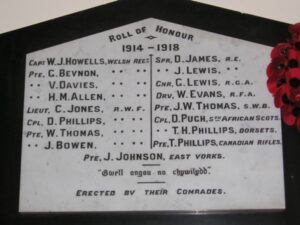
Harry Montague Allen, Private, 20965, Welsh Regiment. Harry was born in Prendergast, Haverfordwest, in 1896, the eldest son of Thomas and Edith Allen, and the family later resided at 3, Glendale Terrace, when Thomas moved with the GWR to work at Whitland. Harry followed his father into the Railway, becoming a Carpenter at the Llanelli Depot. At the outbreak of War, Harry was enlisted into the Army, entering the 15th Battalion, Welsh Regiment, known as the Carmarthen Pals Battalion. After training at Rhyl and Winchester, the battalion moved to France during December 1915 attached to 114 Brigade, 38th (Welsh) Division. During the coming months the Battalion held nearly every section of the British line from Givenchy on the La Bassée Canal to Laventie, about six miles South of Armentières. At the end of May 1916, the Battalion moved South with the remainder of the 38th (Welsh) Division to the Somme area, in readiness for the First Battle of The Somme, which commenced on 1 July 1916. The 38th Division were tasked with the taking of the infamous Mametz Wood, and the Division made its first assault on 7 July 1916, suffering terrible casualties. After the sacking of their Commander, Sir Ivor Philipps, the Division made a renewed assault on 10 July 1915, and the Carmarthen Pals were thrown into action, and plunged into terrible fighting at the ‘Hammerhead’. The wood was cleared with two days of terrible hand to hand fighting, but at the cost of over 5,000 casualties in the 38th (Welsh) Division. It was during the first attacks on the wood that Harry was shot in the chest by a German sniper, and brought back by rail to the 38th Casualty Clearing Station at Heilly, in the Somme valley. Harry died of his wounds on 11 July 1916, and was buried in Heilly Station Cemetery, France. Harry is commemorated on both the Chapel and the Memorial Hall War Memorials, the Memorial at nearby Lampeter Velfrey, and on the new GWR Memorial at Llanelli Goods Shed.
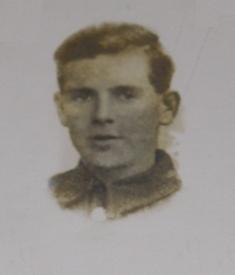
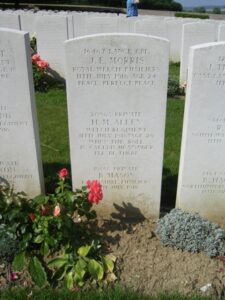
Vincent Allen, Private, 16474, Welsh Regiment. Vincent was born in Whitland, but had moved with his family to Gloucester before the war. He enlisted at Caerphilly into the 10th battalion, Welsh Regiment, which was originally formed in the Rhondda Valley, attached to the 25th Division. The 10th Welsh then transferred to 114 Brigade, 38th (Welsh) Division. In the summer of 1915 the Battalion moved with the remainder of the Welsh Division to Morn Hill Camp, Winchester, where it completed its training and equipping, and embarked for France in December 1915, disembarking at Boulogne the same day. During the winter and spring of 1916 the Battalion held the line in the Armentières sector, and at the end of May 1916 moved South with the remainder of the 38th (Welsh) Division to the Somme area, in readiness for the First Battle of The Somme. The 38th Division were tasked with the taking of the infamous Mametz Wood, with the first attack going in on 7 July 1916. The Welshmen were mown down by heavy machine-gun fire, and forced to withdraw, after suffering terrible casualties. The next attack went in on 10 July 1916, and after two days of hand to hand fighting, the wood was cleared, but at the cost of over 5,000 casualties in the 38th (Welsh) Division. Vincent was Killed in Action during the attack on 10 July 1916. His body was never recovered. And so he is remembered on the Thiepval Memorial, France. Vincent is not commemorated on any Memorial in Whitland.
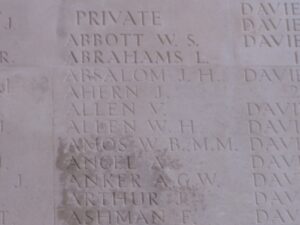
James Beynon, Private, 13097, Welsh Regiment. James was born in Robeston Wathen, the son of Alfred and Sarah Beynon, and the family later moved to Whitland, residing at Gorse Farm. James enlisted at Carmarthen into the 2nd Battalion, Welsh Regiment, which formed part of 3 Brigade, 1st Division. The Division were one of the first to arrive in France, and fought during the epic retreat from Mons to the Aisne, where the German advance was stopped before moving to Ypres, where again they helped stop the Germans taking the ancient city. After a hard winter at Ypres, the Welsh fought at the Battle of Aubers, which was the first major Allied offensive of the war. James was Killed in Action here, on 3 May, 1915 aged only 20. He is remembered on the Le Touret Memorial, Richebourg-L’Avoue. James is commemorated in the Memorial Hall.
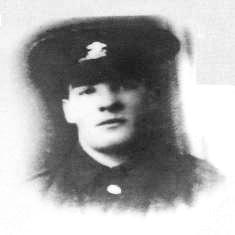
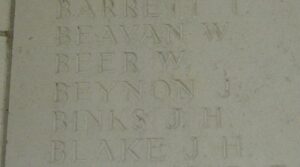
George William Henry Bodman, Private, 2060, Welsh Guards. George was born in Bath in 1885, the son of Frances Norah Bodman. His mother married Thomas William Chambers in 1901, and the family moved to 5, Velfrey Road, Whitland. George moved to Clive House, Tridwr Road, Abertridwr prior to the war, where he worked as a policeman. He enlisted at Cardiff into the newly formed Welsh Guards. The Welsh Guards were raised after the Royal Warrant of 26 February 1915. After being formed, they became part of the 3rd Guards Brigade, Guards Division, which was formed in France in August 1915. Their first taste of battle was at Loos, before being brought south to the Somme in 1916. During the Somme Offensive the Division fought at the Battle of Flers-Courcelette, and this is where George was Killed in Action on 16 September 1916, aged 31. George’s body was lost on the battlefield and never recovered, and so he is remembered on the Thiepval Memorial. George is not commemorated on either memorial in Whitland, but is named on the Lampeter Velfrey Memorial.
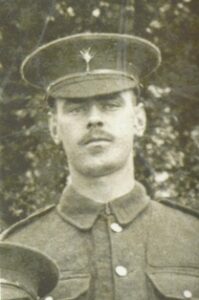
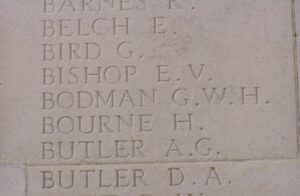
John Bowen, Private, 59427, Royal Welsh Fusiliers. John was the son of Thomas and Mary Bowen, later of Maes-y-Bryn, Clynderwen. John enlisted at Pontardulais into the 2nd Battalion, Royal Welsh Fusiliers, who had been in France since 11 August, 1914. On 22 August they were attached to 19 Brigade and they fought in the rearguard actions from Mons toward the Aisne. On 12 October the Brigade became part of the 6th Division, who had been sent to France to reinforce the BEF on the Aisne, before moving to Flanders. On 31 May, 1915 the Battalion transferred to 27th Division, and on 2 August moved to the 2nd Division, where they took part in the Battle of Loos. After Loos the Battalion again transferred, moving to the 33rd Division, with whom they fought during the Somme Battles of 1916, The Battles of Arras in 1917, and during the Battle of Third Ypres, or Passchendaele. On 6 February, 1918 the Battalion again transferred, this time to the 115 Brigade, 38th (Welsh) Division. It was with the Welsh Division that the 2nd RWF took part in the major British offensives of 1918, after the German armies had burnt themselves out with their desperate offensive of Spring, 1918. The Division fought over the old Somme Battlefield, pushing the Germans back toward the Hindenburg Line, and took part in the Battle of Havrincourt on 12 September, where John was sadly Killed in Action that day, aged only 22. He is buried at Gouzeaucourt New British Cemetery. John is commemorated in the Memorial Hall, and also on the Llandyssilio and the Pontarddulais Memorials.
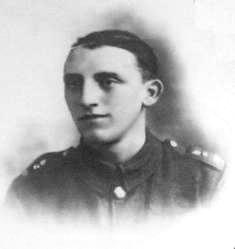
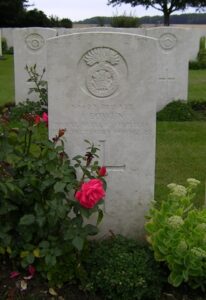
Henry George Coombes, Private, 2015, Welsh Guards. Henry was born at Bristol, the son of Frederick and Alice Coombes, and the family came to live at Whitland, at Holly Grove. Henry enlisted at Newport into the 1st Battalion, Welsh Guards, who were raised after the Royal Warrant on 26 February, 1915. After being formed, they became part of 3 Guards Brigade, Guards Division, which was formed in France in August, 1915. Their first taste of battle was at Loos, before being brought south to the Somme in 1916. During the Somme Offensive the Division fought at the Battle of Flers-Courcelette, and at the Battle of Morval, before settling down into the defensive stage during the winter of 1916/17, when Henry was Killed in Action on 9 December, 1916. He is buried at Bronfay Farm Cemetery. Henry is not commemorated on either Memorial at Whitland.
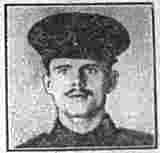
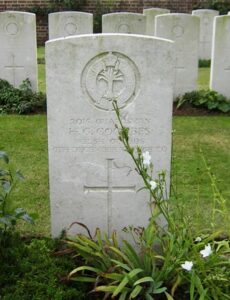
David John Davies, Private, 475279, Canadian Infantry. David was born at Whitland on 25 December, 1876, the son of Rees and Hannah Davies, of Springfield, Whitland, but had migrated to Canada prior to the outbreak of war. He enlisted on 11 September, 1915 at Montreal into the Canadian Expeditionary Force, and was soon posted overseas, as a reinforcement to the 11th Battalion, Canadian Infantry. David had arrived in Britain in the winter of 1915/16, and was stationed at Folkestone, where on 5 February, 1916 he was with a group of fellow soldiers, scrambling to board a bus, when he was knocked over, dying of severe injuries quickly after. He was 37 years old, and his body was brought back to Whitland for burial, where on 11 February, 1916 David was buried with full military honours at Soar Independent Chapelyard. David is not commemorated on either War Memorial at Whitland.
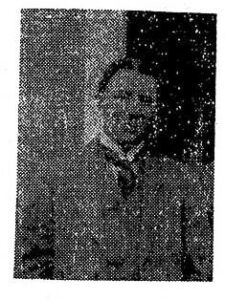
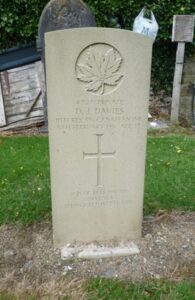
David John Price Davies, Gunner, RMA/11928, Royal Marine Artillery. David was born at Whitland on 13 July 1889, the son of David and Eliza Davies, later of 186, Battersea Park Road, London. David had enlisted prior to the war into the Royal Marine Artillery, and was posted aboard the Cruiser HMS Defence, part of the First Cruiser Squadron of the Royal Navy. HMS Defence had been built at Pembroke Dock, and was stationed in the Mediterranean at the outbreak of war. Upon her transfer to the First Cruiser Squadron, the Defence took part in the Battle of Jutland on 31 May, 1916, and was attacking the German Cruiser SMS Wiesbaden when she was struck by a salvo from a German Battlecruiser hidden in a bank of smoke. She blew up and sank immediately, taking down her entire crew of 903 men, including David Davies, who was 27 years old. He is remembered on the Portsmouth Naval Memorial. David is not commemorated on either Memorial at Whitland.
James Verdi Davies, Private, 13116, Welsh Regiment. James was the son of James and Elizabeth Davies, later of Lowmead House, Whitland. He enlisted at Carmarthen into the 2nd Battalion, the Welsh Regiment which formed part of 3 Brigade, 1st Division. The Division were one of the first to arrive in France, and fought during the epic retreat from Mons to the Aisne, where the German advance was stopped before moving to Ypres, where again they helped stop the Germans taking the ancient city. After a hard winter at Ypres, the Welsh fought at the Battle of Aubers, which was the first major Allied offensive of the war. Here James fought alongside his friend James Beynon who he had enlisted with, and was Killed in Action just two weeks later, on 25 May, 1915. James is remembered alongside James Beynon on the Le Touret Memorial. James is commemorated in the Memorial Hall.
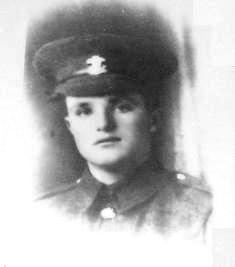
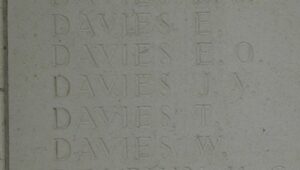
John Davies, Corporal, 12295, South Wales Borderers. John was the son of Ben and Jane Davies, of Spring Gardens, Whitland. He enlisted at Brecon into the 4th Battalion, South Wales Borderers, which was attached to 40 Brigade, 13th (Western) Division. During June 1915 the Division sailed for the Mediterranean, and moved to Alexandria. By 4 July, all units had moved to Mudros, preparatory for landing on Gallipoli, and between 6 and 16 July 1915 landed on Cape Helles and relieved the 29th Division. They left and returned to Mudros at the end of the month, and the entire Division landed at ANZAC Cove from 3 August 1915, taking part in the Battle of Sari Bair. John was wounded here, and died aboard a Hospital Ship on 11 August 1915, aged 16. He was buried at sea, and so is commemorated on the Helles Memorial, Gallipoli. John is not commemorated on any of the Whitland Memorials.
John Harries Davies, Private, PS/8887, London Regiment. John was born in Whitland in 1894, the son of Benjamin and Amy Davies. At some time after the birth of his brother William in 1896 the family moved to Newark Farm, Hempsted, near Gloucester. John enlisted at Epsom into the army and was posted to the 20th (Blackheath and Woolwich) Battalion, London Regiment. The battalion was attached to 141 Brigade, 47th (2nd London) Regiment and landed in France on 10 March 1915. John joined the battalion in 1916 in time to take part in the Somme offensive. He was killed in action during the Battle of Flers-Courcelette on 20 July 1916, aged 21. He has no known grave and is commemorated on the Thiepval Memorial, France. John is not commemorated on any of the Whitland Memorials, but is commemorated at Hempsted.
Richard Davies, Private, 34034, South Lancashire Regiment. Richard was born in Whitland, the son of Thomas and Julia Ellen Davies. The family moved later to The Post Office, Goodwick. Richard enlisted at Fishguard into the Welsh Regiment, with the service number 2405, but must have been wounded at sometime, resulting in his transferring into the7th Battalion, South Lancashire Regiment, part of 56 Brigade, 19th (Western) Division. The Division had arrived in France in July, 1915 and saw considerable action during the Battle of Loos, before moving to the Somme area, where it attacked and took the village of La Boiselle. After a brief rest period, they took to the line again, fighting at Pozieres, and then spending time at the Ancre, where Richard was Killed in Action on 14 November 1916, aged 25. His body was lost in the terrible conditions in the Ancre valley, and he is remembered on the Thiepval Memorial. Richard is not commemorated on either Memorial, but is named on the Fishguard Memorial.
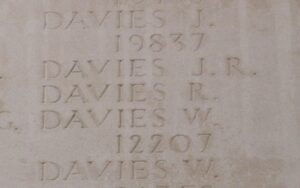
Evan Evans, Private, 14151, Somerset Light Infantry. Evan was born in Whitland, the son of Mary Evans. He enlisted at Merthyr Tydfil into the 6th Battalion, Somerset Light Infantry, which was attached to 43 Brigade, 14th (Light) Division. The Division arrived in Flanders during the summer of 1915, fighting at Hooge on 2 June 1915 onwards, where Evan was wounded, probably during the German ‘Liquid Fire’ attack. He was transported back to the Field Ambulance at Vlamertinghe, where he died of wounds on 28 June 1915. Evan is buried at Vlamertinghe Military Cemetery. Evan is not commemorated on either Memorial.
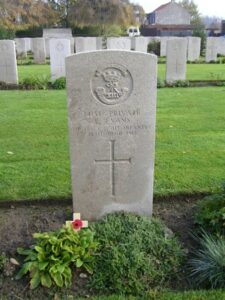
William Evans, Driver, 24474, Royal Field Artillery. William was the son of Stephen and Anne Evans, of Efailfach. William lived with his sister Phebe at Llwyndu prior to moving to Gilfach Goch, to work as a Collier. He enlisted at Tonyrefail on 1 September 1914 into the Royal Field Artillery, and on 1 August 1915 landed at Gallipoli with the 39th Brigade, Royal Field Artillery. After the evacuation from Gallipoli in January 1916, William was posted to France, joining ‘B’ Battery, 33 Brigade, which was attached to the 8th Division. The 8th Division was a regular army unit which moved to the Western Front during September 1914. It was formed of units brought back from around the Empire, and fought at all of the major actions of the war, at Neuve Chapelle, Aubers, and Bois Grenier, before moving to take part in the Somme Offensive. It was during the Battle of Le Transloy that William was killed in action on 7 November 1916, aged 34. He is buried at Pozieres British Cemetery, France. William is commemorated in the Memorial Hall.
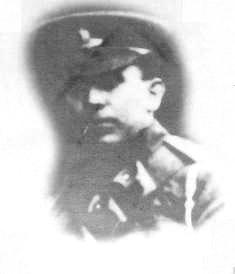
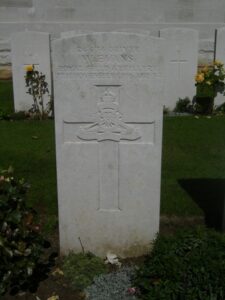
Bertram Louis Heil, Private, 355837, Royal Welsh Fusiliers. Bertram was born in Bethnal Green, on 10 January 1895, the son of Joseph and Annie Heil. He was later fostered by Mrs. S. Archer, of 103, G Block, Queen’s Buildings, Collinson Street, London after both his parents died. Bertram then came to west Wales and worked for the Rowlands family at Glanmarlais Farm, Whitland for several years prior to the war. He enlisted at Melton, Suffolk on 24 April 1915 into the Welsh Horse Yeomanry with the service number 1159. The Welsh Horse was formed as a Welsh Cavalry unit, and fought at Gallipoli and in Palestine as a dismounted Pioneer Battalion, until 4 March 1917 when the battalion was merged with the Montgomeryshire Yeomanry, forming the 25 Battalion, Royal Welsh Fusiliers, joining the newly formed 231 Brigade, 74th (Yeomanry) Division. The Division was not ready to fight in the First Battle of Gaza, but saw its first major action during the Second Battle of Gaza. The battle was a failure, and the EEF was re-organised under a new commander, Sir Edmund Allenby, before launching the Third Battle of Gaza on the night of 31 October 1917. This assault was launched along a winder front, running from Gaza to Beersheba, and this time the EEF prevailed, opening the door to Jerusalem. After the fall of Jerusalem the EEF continued its advance through the Jordan Valley. On 30 November 1917 the 25th RWF took part in an advance, during the Battle of Nabi Samwil. Bertram was killed in action that day, when advancing with a party of some 40 men which was counter-attacked by the Turks whilst pushing into the hills. The 22-year-old has no known grave and is commemorated on the Jerusalem Memorial, Israel. Bertram is not commemorated on either Memorial at Whitland.
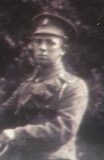
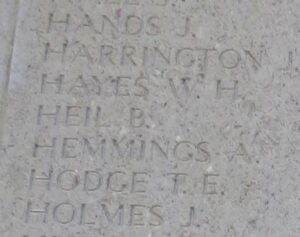
William John Howells, Captain, Welsh Regiment. William was born in White Lion Farm, Eglwys Cummin, in 1888, the son of Daniel and Mary Howells. His Grandfather was Ben John of Brook, who William was living with before he enlisted. William was educated at Tremoilet School and Whitland Grammar Schools, before gaining a BA with Honours at Aberystwyth University. He then moved on to work in Lampeter University before the war broke out. William enlisted into the Welsh Regiment at the outbreak of hostilities, and was commissioned into the 8th Battalion, the Welsh Regiment as a Lieutenant. The 8th Battalion formed at Cardiff during August 1914 as part of K.1. They were then attached to 40 Brigade, 13th Western Division. Toward the end of February 1915, the entire Division concentrated at Blackdown in Hampshire. On 7 June 1915, orders were received for the Division to move to the Mediterranean, then by 4 July from Alexandria to Mudros-preparing for the landing on Gallipoli. On 4 July 1915 the Division landed on Cape Helles and relieved the 29th Division. From there, the Division took part in several actions, most notably The Battle of Sari Bair between 6-10 August 1915 and the Battle of Russell’s Top on 7 August 1915. The Battalion War Diary for the period from 8 August 1915 shows that they had moved up to positions around Chunuk Bair, in support of the Gloucester’s and the Wellington Battalion. The fighting was ferocious and the diary shows that on that one day, the 8th Welsh suffered 4 Officers and 4 Other ranks killed, 9 Officers and 154 Other Ranks wounded, and 4 Officers and 266 Other Ranks Missing in Action. One of the wounded officers was William. He was evacuated from Gallipoli, but died of his wounds on 10 August 1915, aged 23 aboard the Hospital Ship HMHS Valdivia. William was buried at sea, so he is commemorated on the Helles Memorial, Turkey, on Panel 140-144. William is commemorated in the Memorial Hall.
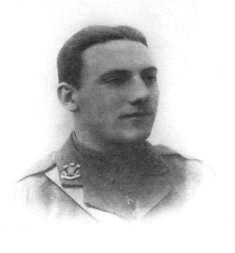
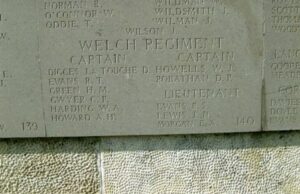
Arthur George Jacobs, Lance Corporal, 12338, Royal Welsh Fusiliers. George was the son of David and Elizabeth Jacobs, of Cyffig. He enlisted at Llanelli into the 8th Battalion, Royal Welsh Fusiliers, which formed part of the 40 Brigade, 13th (Western) Division. The Battalion moved with the Division to the Med, arriving at Mudros by July 1915, before landing on Gallipoli that month. On Gallipoli the Division saw more than their fair share of fighting, taking part in the Battles of Sari Bair, Russells Top and Hill 60, before moving to Suvla Bay where they withheld the Turkish attacks on 7 January 1916. After evacuating to Egypt the Division moved to Mesopotamia, where they attempted the relief of Kut. George Died of Wounds in Mesopotamia on 26 January 1917, aged 29, and is buried at Amara War Cemetery. George is not commemorated on either Memorial.
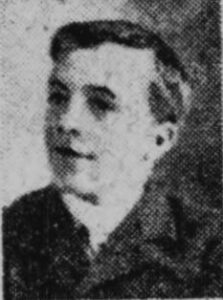
David James, Private, 35439, Gloucestershire Regiment. David was born at Beckenham, Kent in 1882, the son of George and Emma James. The family later moved to Whitland, where they named their new home in Market Street Beckenham House. David enlisted into the Army in Carmarthen, joining the Royal Engineers, with the service number 224035, but was later transferred into the 13th Battalion, Gloucestershire Regiment. The battalion served as the Pioneer Battalion in 39th Division. The Division moved to France at the end of February and early March 1916, and on 30 June 1916 it took part in a very costly attack in the area of Richebourg l’Avoue, which is not officially recognised as a separate engagement. The Sussex Battalions in particular suffered very heavy casualties. The Division moved to the Somme in August 1916, where it fought at the Battle of the Ancre Heights, where they captured the Schwaben Redoubt, and helped capture Regina Trench. They then fought at the Battle of the Ancre, and remained on the Somme over the winter. In 1917 the Division were at Ypres, and fought at the Battle of Pilckem, the Battle of Langemarck, the Battle of the Menin Road, the Battle of Polygon Wood and the Second Battle of Passchendaele. During the beginning of 1918 they were stationed near St. Quentin, and were one of the Divisions to be hit hard here by the German Offensive which was launched on 21 March 1918. They fought here at the Battle of St Quentin, and falling back fought at the Actions at the Somme Crossings and the Battle of Rosieres. They were moved to Flanders to rest, but April was to see the Germans launch an attack here at the Lys, and the Division fought at the First Battle of Kemmel. David was killed here on 26 April 1918. He was 36 years old, and is commemorated on the Tyne Cot Memorial, Belgium. He is also commemorated on the family grave at Zoar Chapel, Whitland.
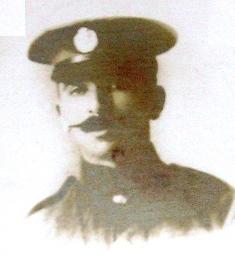
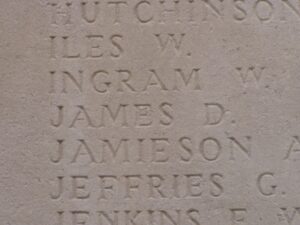
Peter William James, Driver, 42313, Royal Field Artillery. Peter was born in 1889, the son of William and Phoebe James, of Llanllyn, Hebron, Whitland. He worked as a Grocer’s Assistant in Merthyr Tydfil prior to the war and enlisted at Tonypandy into the Royal Field Artillery on 5 November 1914. He was posted to the 147th Brigade Ammunition Column, Royal Field Artillery, which was attached to the 29th Division. Peter landed with the division on the Gallipoli peninsula on 3 April 1915 and would have taken part in some heavy fighting before being wounded on 30 April, suffering bullet wounds to his head and arm. He was evacuated to hospital at Port Said, where he was operated on, but died of his wounds on 2 July 1915, aged 28. Peter is buried in Port Said War Memorial Cemetery, Egypt. He is not commemorated at Whitland.
Richard Jenkins, Private, 201048, Welsh Regiment. Richard was the son of William and Elizabeth Jenkins, of Llawhaden, Narberth. He enlisted at Llanelli into the 1/4th Battalion, Welsh Regiment, which was part of 159 Brigade, 53rd (Welsh) Division. Richard survived the battalion’s time at Gallipoli, and moved to Egypt with them during the withdrawal from Gallipoli. After a year fighting Arab tribesmen in Egypt, the division moved into Palestine, and Richard was killed here, during the Second Battle of Gaza, on 20 April 1917. He was just 21 years old, and is buried at Deir El Belah War Cemetery, Egypt. Richard is commemorated on the Congregational Chapel Memorial.
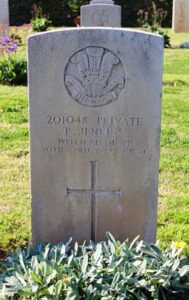
Joseph Johnson, Private, 29688, East Yorkshire Regiment. Joseph was the son of James Henry Johnson and Emma Johnson, and was born in London in 1889. Joseph moved to West Wales and settled in Llanddowror, marrying Mary Phillips on 25 October 1913. Joseph enlisted at Carmarthen on 11 March 1915, and joined the Army Service Corps as a driver, with the serial number T4/059339. In France, he was attached to No. 1 Section, 99th Company, 27th Reserve Park, before transferring to the Infantry joining the 1st Battalion, the East Yorkshire Regiment, who were part of 18 Brigade, 6th Division. On 21 March 1918, the Germans launched their offensive on the Somme, and smashed through the British lines. Joseph was killed in action on 31 March 1918, aged 29, whilst his battalion was fighting a fierce defensive battle. It shows how chaotic and awful the conditions were, as nothing at all had been heard of him by his family, until Christmas Day 1919. Joseph’s wife received a telegram from the War Office saying that he had been confirmed as killed. Joseph’s body , like so many others of that terrible time, was lost, and so he is remembered on the Pozieres Memorial, on panels 27 & 28. The Memorial commemorates over 14,000 casualties of the United Kingdom and 300 of the South African Forces who have no known grave and who died on the Somme from 21 March to 7 August 1918. Joseph left two children-Oliver Henry Johnson had been born on 2 March 1915 and Joseph Randall Johnson born on 20 July 1917. Joseph’s bereaved widow Mary sadly died on 10 February 1920 after a short illness, leaving the two boys orphaned. Joseph is commemorated in the Memorial Hall, and is also remembered on the Llanddowror and Laugharne Memorials.
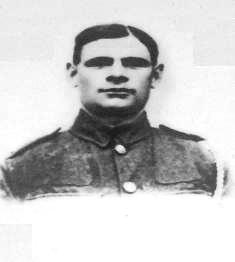
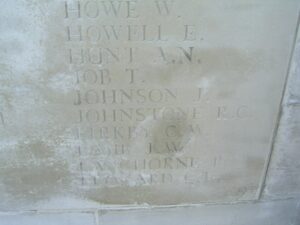
Violet Isabel Johnson, Nurse, British Red Cross. Violet was born in London in 1892, the daughter of Benjamin and Isabel Johnson. Her father worked as a painter and glazier and by 1901 had moved his family to Llanboidy, before settling them at 3, King Edward Street, Whitland by 1911. Violet worked as a typist at Whitland prior to the war. Following the outbreak of war in August 1914, the British Red Cross set up a military hospital at Carmarthen, and on 29 December 1914 Violet took up employment there as a Ward Nurse and Kitchen Orderly. The hospital had come into use very early in the war, accepting soldiers who had been wounded during the retreat from Mons, and also took in Belgian, French and Australian troops among its patients. The work was hard and demanding for the many young women working there, and this work took its toll on Violets health. She died at home in Whitland on 9 July 1916, aged 24. Nothing further is known of Violet, as she is not commemorated as a casualty by the Commonwealth War Graves Commission. She is also not commemorated on any local war memorial.
Clifford Jones, Lieutenant, Royal Welsh Fusiliers. Clifford was born in Whitland, the only son of Reverend Daniel Jones (Baptist Minister, Whitland) and Mrs. Elizabeth Ann Jones, of Bodlondeb, Whitland. Clifford was an Honours Graduate of Wales and Oxon, and was commissioned into the 15th (London Welsh) Battalion, Royal Welsh Fusiliers, which formed part of the 113 Brigade, 38th (Welsh) Division. The Division embarked for France from Folkestone on 5 December 1915, disembarking at Boulogne the same day. During the winter and spring of 1916 the Battalion held the line in the Armentières sector, and at the end of May, 1916 moved South with the remainder of the 38th (Welsh) Division to the Somme area, in readiness for the First Battle of The Somme. After surviving the Battle of Mametz Wood, Clifford moved with the Battalion to reserve in the Ypres sector, and the Division didn’t fight again for almost twelve months, until they were brought into the line north of Ypres, tasked with the taking of the village and strongpoint of Pilckem. Clifford was Killed in Action three days into the Battle of Pilckem, on 2 August, 1917, aged 25. He is commemorated on the Menin Gate Memorial. Clifford is commemorated in the Memorial Hall.
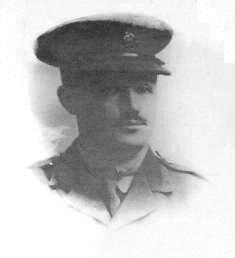
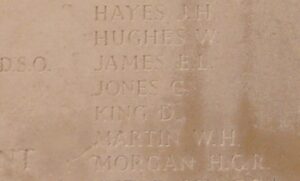
John Jones, Private, 23413, Royal Welsh Fusiliers. John was born at Llansawel, the son of Evan and Ellen Jones. His parents later moved to Dolgellau, and John resided in Whitland prior to the war. He enlisted at Carmarthen into the 10th Battalion, Royal Welsh Fusiliers, part of 76 Brigade, 3rd Division. The 10th RWF’s first action with the Division was during the actions of the St. Eloi craters, south of Ypres, during March 1916. John was badly wounded by gunshot wounds to his buttocks, and was brought to the No. 13 General Hospital at Boulogne on 1 April 1916. He died there of his wounds on 4 April 1916, aged 29. He is buried in Boulogne Eastern Cemetery. John is not commemorated on either Memorial at Whitland.
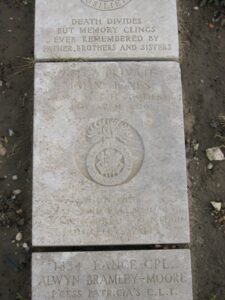
Herbert Benjamin Thomas Lewis, Corporal, 16296, Northamptonshire Regiment. Herbert was born in Whitland on 22 March, 1879, the son of Robert and Mary Lewis, late of Waunfaur Farm. The family moved to Hackleton, Northampton, which is where Herbert enlisted into the 3rd Battalion, Northamptonshire Regiment on 31 October, 1914. He transferred into their 2nd Battalion, part of 24 Brigade, 8th Division. Herbert arrived in France on 2 March, 1915 and fought in the Battle of Neuve Chapelle, and was Killed in Action during the Battle of Aubers Ridge on 9 May, 1915 aged 37. His body was never recovered, and he is commemorated on the Ploegsteert Memorial. In a letter to Mary after the battle, Lieutenant Haldane wrote- ‘I am sorry to say that details as to what happened on 9th May are very hard to get, but I do know that Herbert B T Lewis advanced with his company in the attack. They were the leading company, and he with many of his company members were caught with machine gun fire.’ Herbert is not commemorated on either Memorial in Whitland.
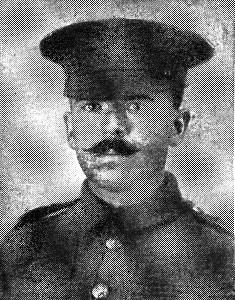
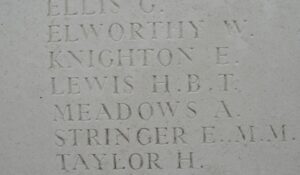
John Lewis, Sapper, 157811, Royal Engineers. John was the son of Richard and Martha Lewis, of Castell, Vorlan, Maenclochog. He worked at Whitland prior to the war and enlisted into the Royal Engineers at Llanelli, becoming a Sapper in their 254th (Tunnelling) Company. The Tunnelling Companies were formed with the task of attempting to break the stagnated positions on the Western Front by undermining the German positions, laying mines to blow them out of existence. They also carried out other tasks, such as digging underground shelters and dugouts near the front line, always dangerous and uncomfortable work. John was wounded at Ypres during the Battle of Passchendaele, and Died of Wounds on 22 October 1917, aged 25. He is buried at Ypres Reservoir Cemetery. John is commemorated on both Memorials.
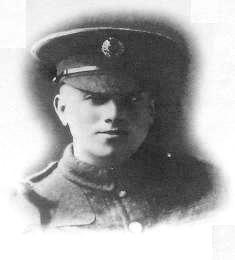
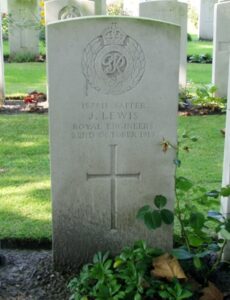
Thomas George Lewis, Gunner, 100593, Royal Garrison Artillery. Thomas, or George as he was better known, was born in Cilfynydd. The family came to live in St. Mary Street, Whitland, and George attended Whitland Council and County Schools, before taking up a post at Lloyd’s Bank n Llandovery. George was engaged to a Miss Thomas, and he enlisted at Llandovery into the Royal Garrison Artillery, being posted to their 48th Heavy Battery, part of the 3rd Brigade, R.G.A. Not much is known of where George fought except that during the spring of 1918 he was at Ypres. The German offensive of Spring 1918 had been launched on 21 March, and they turned their attentions to Flanders a month or so later. George was Killed in Action at Ypres on 30 May 1918 and is buried at Canada Farm Cemetery. Sometime later, his mother received a letter from a Welsh Chaplain who was attached to the Brigade- ‘This is a great shock to you, and I hasten to convey to you personally, and on behalf of the battery to which your son was attached, our greatest sympathy. I understand that he was greatly respected, and that his loss will be felt by all…’ Thomas is commemorated in the Memorial Hall, and also on the Llandovery Memorial.
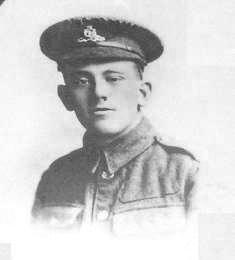
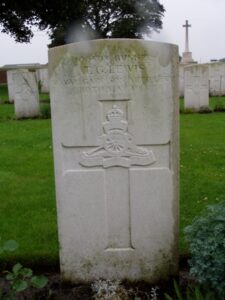
Dan Phillips, Corporal, 40214, Royal Welsh Fusiliers. Dan was the son of William and Anne Phillips, of Blaenhiraeth, Henllan, Whitland. He was educated at Whitland Grammar School and was a student at the South Wales Training College at Carmarthen when he enlisted there into the army and was posted to France in 1916, joining the 10th Battalion, Royal Welsh Fusiliers, which was attached to 76 Brigade, 3rd Division, and had suffered heavy casualties during its first major action, at the St. Eloi craters, south of Ypres. The division moved south to the Somme, entraining at St. Omer on 1 July 1916 and reached Carnoy on 13 July, while the Welsh Division was moving away from the same area following its assault on Mametz Wood. By now Dan had been promoted to Acting Corporal. The 3rd Division moved into the line on 14 July in order to take part in the assault on Delville Wood, Longueval and Bazentin le Grand. The 10th RWF remained in reserve for the initial attack, but would soon be thrown into the fray as on 20 July was given the task of entering Delville Wood and clearing along Princes Street. The battalion suffered heavily before reaching the wood, where South African scouts met them and the 10th RWF advanced into a fierce fight which earned the battalion two Victoria Crosses. The 10th RWF, relieved from Breslau Trench on 25 July, did not go back into action until moving back into the front, reaching Talus Wood on 14 August, and its officers reconnoitred the Casement, Dublin and Chimpanzee trenches in front near Guillemont before taking them over on 15 August and spent much of the day consolidating them, suffering three men killed and four wounded. On the following day the battalion attacked Lonely Trench, but were beaten back, suffering five officers and 116 men killed between 16 and 19 August. Dan was posted as missing during the initial attack on Lonely Trench on 16 August 1916. He was later found to have been killed in action that day. He was 25 years old and is commemorated on the Thiepval Memorial, France. Dan is commemorated in the Memorial Hall and also on memorials at Whitland Grammar School and at Henllan Amgoed.
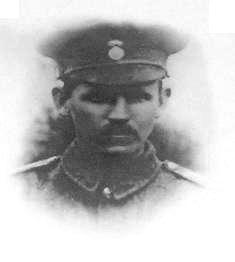
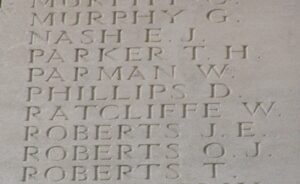
Thomas Aston Phillips, Private, 931114, Canadian Expeditionary Force. Thomas was born at Narberth on 11 July 1876, the son of Benjamin and Phoebe Phillips. The family moved to Whitland prior to the war, but Thomas emigrated to Canada, working as a Rancher. On 4 April, 1916 Thomas enlisted at Fernie, British Columbia, into the CEF, and upon arriving in France was posted to the 2nd Battalion, Canadian Mounted Rifles, part of 8 (Canadian) Brigade, 3rd Canadian Division. The Division saw heavy fighting at Mount Sorrel, south of Ypres, during June 1916, then moved to the Somme, and fought at Flers, Thiepval, Le Transloy and the Ancre. They were in the Arras sector in 1917, and took part in the Battle of Vimy Ridge, staying in the area until October 1917 when they moved to Ypres, fighting at Passchendaele village. In 1918 they moved south, taking part in the turning point of the war, the Battle of Amiens, on 8 August, 1918 and stayed on the offensive, pushing north-east toward the Scarpe and the Canal Du Nord, where they captured Bourlon Wood. Thomas was Killed in Action during this later battle, on 29 September, 1918. He was 43 years old, and is buried at Cantimpre Canadian Cemetery. His brother, William Lewis Phillips was also killed, but is not commemorated in Whitland. Thomas is commemorated in the Memorial Hall.
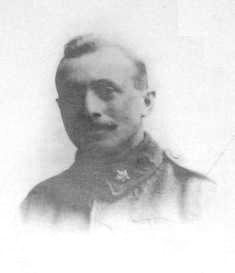
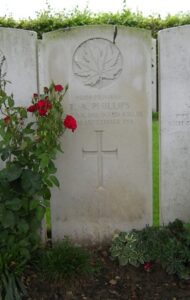
Thomas Herbert Phillips, Lance Corporal, 11217, Dorsetshire Regiment. Thomas was born at Milford Haven, the son of John and Mary Phillips. The family moved to Cross Street, Whitland prior to the war, and Thomas enlisted at Aberavon, into the 6th Battalion, Dorset Regiment, which was attached to 50 Brigade, 17th Northern) Division. The Division had landed in France during July, 1915, and taken up positions south of Ypres. They fought during the opening of the Somme Offensive, taking heavy casualties during the attack on 1 July 1916, and managed to capture Fricourt. They were removed from the line to rebuild, and moved to the Arras sector, taking part in the opening stages of the 1917 Battle of Arras, fighting at the Battle of the Scarpe. Thomas was Killed in Action during the Second Battle of the Scarpe on 22 April 1917, aged 26. He is buried at Cabaret Rouge Military Cemetery, France. Thomas is commemorated in the Memorial Hall.
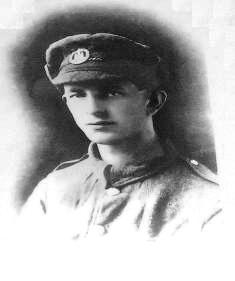
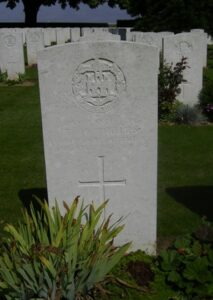
David Pugh, Lance Corporal, 3278, South African Expeditionary Force. David was the son of David and Sarah Pugh, of Clover Hill Farm, Velfrey Road, Whitland. Not much is known of him, but he migrated to South Africa, possibly even staying on there after the Boer War, and he enlisted on 17 August, 1915 for service in the South African Overseas Expeditionary Force. David joined the 4th (Scottish) South African Infantry Regiment, which was assembling with the South African Brigade, in Egypt. During March 1916 the Brigade embarked for Marseilles, and became attached to the 9th (Scottish) Division, situated near Bailleul. The South Africans trained in trench warfare over the coming weeks, before the 9th Division moved south, to the Somme, in June. On 30 June the South African Brigade moved to Grove Town, south of Albert, where it watched the opening of the Battle of the Somme on 1 July. On the following night the South Africans entered the front line north-west of Maricourt, and spent the coming days holding the trenches against German artillery fire. On Monday 10 July 1916, the 4th South African Regiment attacked Trones Wood, in support of the 30th Division, but came under heavy artillery fire. David was killed during fighting on the southern edge of Trones Wood on 10 July 1916, aged 42. He has no known grave, and is commemorated on the Thiepval Memorial, France. David is commemorated in the Memorial Hall and on the Lampeter Velfrey Memorial.
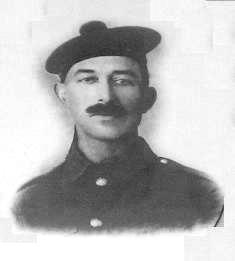
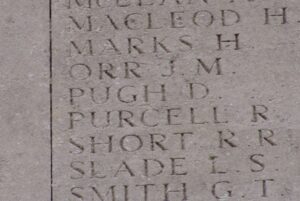
James Ranger, Private, G/53571, Middlesex Regiment. James was the son of Caroline Selina Ranger, of 105, All Saints Street, Hastings. Prior to the outbreak of war, James lived in Whitland, enlisting at Carmarthen into the 1/8th Battalion, Middlesex Regiment, part of 167 Brigade, 56th (London) Division. The Battalion had landed at Le Havre on 9 March, 1915, attached to the 28th Division, and fought at Ypres, before moving to the 8th Division on 23 June 1915, again in Flanders. On 9 February, 1916 they moved to the 56th Division, which took part in the Attack on Gommecourt in July 1916, as a diversionary measure to the main Somme Offensive. They remained on the Somme through 1917, moving to Arras in 1917, then to Ypres, where they fought at Langemark. They fought in the Battle of Cambrai in late 1917, and were in the Arras area when the German Spring Offensive hit, and were pushed back over the old Somme battlefields. The Division fought in the great advance of 1918, at the Canal Du Nord and at Cambrai, the pursued the retreating Germans back to the Selle and beyond. James was Killed in Action just days before the Armistice, on 7 November, 1918, aged only 21. He is buried at Hautrage Military Cemetery. James is not commemorated on either Memorial.
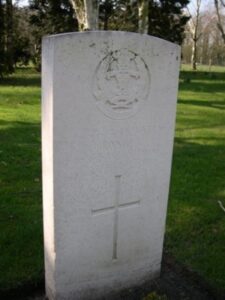
David Salmon, Private, 31204, Royal Welsh Fusiliers. David was born at Narberth, the son of John and Sarah Salmon, (and the brother of Evan below) of Lowlands, Narberth. He enlisted at Carmarthen with his brother, originally into the Royal Field Artillery, with consecutive service numbers 98763 and 98764. Both brothers then transferred into the 1st Battalion, Royal Welsh Fusiliers, part of 22 Brigade, 7th Division. The Division had served on the Western Front since 7 August, 1914, and by early 1916 were stationed on the Somme. David was wounded in February 1916, and Died of Wounds on 6 February 1916 aged 21. He is buried at Point 110 New Military Cemetery, Fricourt. David is commemorated on the Congregational Chapel Memorial. He is also named, along with his brother Evan, on the St. Clears and Narberth Memorials.
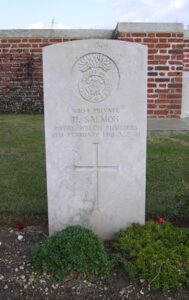
Evan Salmon, Private, 31203, Royal Welsh Fusiliers. Evan was born at Narberth, the son of John and Sarah Salmon, (and the brother of David above) of Lowlands, Narberth. He enlisted at Carmarthen with his brother, originally into the Royal Field Artillery, with consecutive service numbers 98763 and 98764. Both brothers then transferred into the 1st Battalion, Royal Welsh Fusiliers, part of 22 Brigade, 7th Division. The Division had served on the Western Front since 7 August, 1914, and by early 1916 were stationed on the Somme. Evan was killed in Action just a day after his brother, on 7 February, 1916 aged 23. He is buried at Corbie Communal Cemetery Extension. Evan is commemorated on the Congregational Chapel Memorial. He is also named, along with his brother David, on the St. Clears and Narberth Memorials. It must have been a terrible blow to their parents to hear of the loss of both their sons.
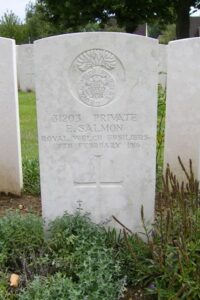
Daniel Thomas, Guardsman, 6995, Guards Machine Gun Regiment. Daniel was the son of Rowland and Elizabeth Thomas, of Tynewydd Rhydypark, Cwmfelyn, Whitland. He enlisted into the 5th Battalion, Guards Machine Gun Regiment, part of the Guards Division, which had been formed in France on 10 May, 1918 by Royal Warrant, from the four Machine Gun Battalions of the Guards Division. Daniel was hospitalised in Spring 1918 with pneumonia, and sadly died on 7 July 1918, aged 21. He is buried at Caterham & Warlingham Burial Ground. Daniel is not commemorated on either Memorial.
David Thomas, Sergeant, 24219, Welsh Regiment. David was born in Whitland, and enlisted at Barry into the 16th Battalion, Welsh Regiment, part of 115 Brigade, 38th (Welsh) Division. The Division had landed in France during late 1915 and had spent the Winter being initiated into trench warfare around the Armentieres area, before moving south in June, 1916 to take part in the Battle of the Somme. The Division were tasked with the capture of the formidable Mametz Wood, and begun their attack on 7 July 1916, suffering many casualties. One of the casualties during the initial attack was David Thomas. His body was lost in the ensuing fighting over the Wood, and so he is remembered on the Thiepval Memorial. David is not commemorated on either Memorial.
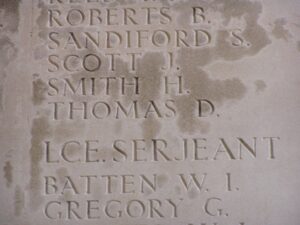
Ernest and Mary Hannah Thomas, Civilians. Ernest was born in 1879, the son of David and Ann Thomas, of 16, St. John Street, Whitland. He worked as a builder for many years prior to the war before emigrating to Canada, and lived with his wife Mary Hannah Thomas, at 318, Notre Dame, Winnipeg. The couple had been home visiting their family in Whitland a number of times prior to the war and early in 1915 had decided to visit Whitland once more, travelling to New York to sail back to Britain aboard the SS Lusitania. By this time the Germans had declared unrestricted submarine warfare and notices had been posted in many American newspapers warning people against travelling on ocean liners, however the warnings were ignored, and Lusitania set sail from New York on 1 May 1915. On 7 May 1915 Lusitania was nearing safety, and was steaming past the Old Head of Kinsale off the south coast of Ireland, when she was struck by a torpedo which had been fired by the German submarine U-20. A secondary explosion caused the liner to begin to sink and listed heavily, making the launching of her lifeboats difficult. By the time she had gone down, only six of her 48 lifeboats had been launched. The cruiser HMS Juno was despatched from Cork Harbour immediately upon the receipt of an SOS from Lusitania, but was ordered to return to port. Aboard Lusitania were 1,266 passengers and a crew of 696, a combined total of 1,962 people. 1,201 lost their lives in the sinking. Among them were Ernest and his wife Mary Hannah Thomas. Ernest’s body was recovered and identified, before being buried in Cobh Old Church Cemetery, in grave 475, while the body of his wife was never identified. Neither of the young couple appear to be commemorated locally, although they are commemorated on the grave of Ernest’s parents at Carvan Chapel.
John Wynford Thomas, Private, 29828, South Wales Borderers. John was born on 8 July 1898, the son of Evan Thomas and Sarah Thomas (nee Harries), of 2, King Edward Street, Whitland. He was a Draper prior to enlisting at Cardiff in May 1917 into the South Wales Borderers. John was posted France on 7 July 1917, joining the 6th Battalion, South Wales Borderers, who were Pioneers to the 25th Division. John saw his first action near Ypres, fighting in the Battle of Messines, where they successfully took the ridge, at the side of the Ulster and New Zealand Divisions. They then moved north, taking part in the Battle of Pilckem, and remained in the area for the next two months, before moving south to the Bethune sector. John was killed in action here on 31 October 1917. The 19-year-old was buried in Gorre British and Indian Cemetery, France. John is commemorated in the Memorial Hall.
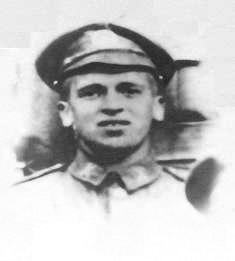
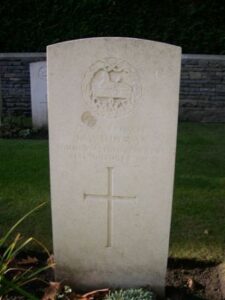
Levi Thomas, Private, 8226, South Wales Borderers. Levi was born at Cyffig, Whitland in 1884, the son of Daniel Thomas and Jane Thomas (née David). By 1891 the family was residing at Shop Back, Tavernspite. David worked as a stockman at Tavernspite and then as a Collier prior to enlisting at Pontypridd into the 2nd Battalion, South Wales Borderers (2nd SWB) in 1903 and served with C Company. The 2nd SWB was based in Tientsin in China at the outbreak of war, where it took part in an operation alongside the Japanese army to force the German garrison from Tsingtao. The battalion embarked from Hong Kong on 4 December 1914 for Plymouth. Once back on British soil, it joined 87 Brigade, 29th Division at Rugby. On 17 March 1915 the battalion sailed from Avonmouth aboard the SS Canada for Alexandria, and on 25 April 1915 the entire division landed at Gallipoli. Levi was killed in action during the landings on Gallipoli that day. He was 31 years old, and is remembered on the Helles Memorial to the missing. Levi does not appear to be commemorated locally, but is most probably the only war casualty to have hailed from Tavernspite, which has no war memorial.
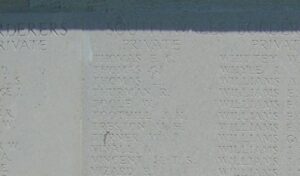
Willie Morris Thomas, Private, 73210, Royal Welsh Fusiliers. Willie was the son of William and Martha Thomas, of “Brynawel” Henllan Amgoed, Whitland. He enlisted at Carmarthen originally into the South Wales Borderers, but transferred into the 9th Battalion, Royal Welsh Fusiliers, part of 58 Brigade, 19th (Western) Division. The Battalion landed at Boulogne on 19 July, 1915 and fought during the Battle of Loos, the Battle of the Somme, and the Battles of Third Ypres, gaining themselves a reputation as one of the best Divisions on the Western Front. The Division suffered heavily during the German Spring Offensive, being caught up in the German attack on the Eastern Somme sector during the First Battle of Bapaume, and Willie was Killed in Action in the area between Achiet-Le-Petit and Sailly-Au-Bois on 26 March, 1918, aged just 19. He is buried in H.A.C. Cemetery, Écoust-St. Mein. Willie is commemorated in the Memorial Hall.
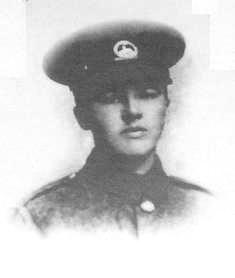
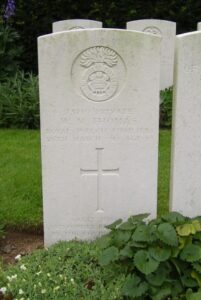
Hywel Penry Walters, Private, 228544, Royal Fusiliers. Hywel was born at Whitland in 1896, the son of John and Catharine Walters, of Brunant Farm. By 1911 the family had sold up and moved to Church Farm, Throwley, Faversham, Kent.Hywel enlisted into the Royal West Kent Regiment at Faversham, while his brother John enlisted into the East Kent Regiment (the Buffs). Hywel was then posted to the 1st Battalion, London Regiment, before joining the 13th Battalion, Royal Fusiliers, which was in France attached to 111 Brigade, 37th Division. He probably joined the battalion after the early stages of the Somme offensive, in time to take part in the Battle of the Ancre. The division then moved in March 1917 and took part in the First Battle of the Scarpe, where it captured Monchy le Preux. They then took part in the Second Battle of the Scarpe, and the Battle of Arleux before moving north to Ypres. Hywel was killed in action following a German counter-attack against his battalions trenches just south of the Menin Road on 1 October 1917. He was 21 years old and was buried on the battlefield, but following the war his grave was exhumed and he was re-interred in Zantvoorde British Cemetery, Belgium. Hywel does not appear to be commemorated locally.
World War Two, 1939-1945
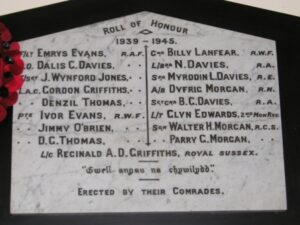
Benjamin Stanley Davies, Fusilier, 4201888, Royal Welch Fusiliers. Benjamin was born on 11 July 1914, the son of Thomas Davies and Anne Davies of New Pencraig, Efailwen, Whitland. He worked as a tunnel labourer prior to enlisting into the army and was posted to the 1st Battalion, Royal Welch Fusiliers. The Battalion had suffered terribly during the German invasion of France, and the remnants were evacuated from Dunkirk. Back in the U.K., it was brought back up to strength by drafting in men from other Battalions of the R.W.F., and in 1942 they sailed to the Far East to face the Japanese invasion. After a brief stop in Cape Town they arrived in India in the Summer of 1942 and were employed in quelling the rebellion there at first. After some training in amphibious landing, the Battalion were sent to Burma, landing on Akyab Island. In March 1943 they moved to Donbaik where they had their first taste of battle against the Japanese. After suffering heavily, they managed to evade encirclement and were pulled out of Burma back to India, where they rebuilt and underwent further training. In 1944 the Japanese crossed the Chindwin River in Burma, and were advancing on Imphal and Kohima. The R.W.F., as part of 6 Brigade, 2nd Division, were rushed to the area during April, where they met the Japanese head on, finally winning the battle. After that, the Japanese were on the back foot, being pushed back by the advancing British troops, and it was during this period that Benjamin was posted as missing, presumed killed in action, on 29 September 1944. The 30-year-old has no known grave and is commemorated on the Rangoon Memorial, Myanmar. Benjamin is not commemorated locally, but is possibly commemorated at Efailwen.
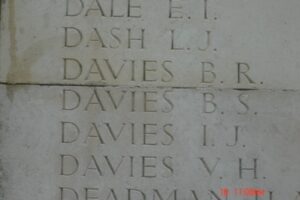
Benjamin Gwynmor Davies, Sergeant, 1704708, Royal Artillery. Benjamin was born on 26 December 1912, the son of Edwin Davies and Mary Davies (nee Williams), of Market Street, Whitland. He married Elsie Mary Edwards prior to the war and by 1939 the couple were residing at 18, Glenalla Road, Llanelli, where Benjamin worked as a manager in a grocery store. Benjamin enlisted into the Royal Artillery in 1941 and was posted to Egypt, where he met his brother Eddie, who was serving there with the Royal Air Force. Benjamin most likely saw active service in North Africa until becoming posted to India and was attached to the 22nd Anti-Tank Regiment, West African Artillery, which was attached to the Royal West African Frontier Force. Benjamin was killed in action in India on 13 April 1945. The 32-year-old was originally buried in Riazmunshir, near Fenny, in Bengal, but in 1946 the war graves in the cemetery were exhumed and re-interred in Maynamatti War Cemetery, Bangladesh. Benjamin is commemorated on the Memorial Hall.
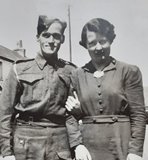
Myrddin L. Davies, Royal Engineers. The memorial contains the name of this man, who reportedly served with the Royal Engineers. There was no such man, and also no-one close to matching these details, and the closest matches are the two men below, Charles Llewellyn Davies, Royal Engineers; Myrddin Charles Davies, Royal Navy. The former is the closest match serving with the Royal Engineers, and the latter the closest matching name:
Charles Llewellyn Davies, Sapper, 14527401, Royal Engineers. The Memorial shows a Myrddin L. Davies, but the only possible match for this is Charles Llewellyn Davies. Not much is known of him, but he resided at Stammers Road, Saundersfoot prior to the war. He died at Swansea on 5 September 1947, aged 23, and is buried at St. Issells Cemetery. He is commemorated in the Memorial Hall?
Dalis George Davies, Pilot Officer, 48776, Royal Air Force Volunteer Reserve. Dalis was the son of Benjamin and Annie Davies, of Whitland. Dalis must have been an experienced pilot, as he was sent to Canada to become a Pilot Instructor, through the British Commonwealth Air Training Plan and joined No. 33 Elementary Flying Training School, at Caron. This scheme in Canada produced thousands of well-trained aircrew, more than enough to keep the various air forces of the Commonwealth supplied with men throughout the course of the war, but thousands died whilst training in Canada. Dalis was killed whilst performing aerobatics during a solo flight, when he crashed into the ground near Lake Valley, Saskatchewan on 8 September 1942. The remains of the 24-year-old were recovered from the wreckage, and he was buried in Caron Municipal Cemetery, Ontario. Dalis is commemorated in the Memorial Hall and at Whitland Grammar School.
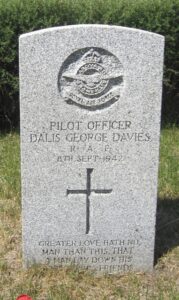
Myrddin Charles Davies, Stoker 2nd Class, D/KX132031, Royal Navy. Myrddin was born at Blaengarw on 5 April 1922, the son of Jenkyn William Davies and Irene May Davies (nee Charles). He enlisted into the Royal Navy and after completing his training as a stoker was posted aboard the Tribal Class Destroyer HMS Matabele. On 17 January 1942 Matabele was part of the escort screen for Convoy PQ-8, which was bound for Murmansk, when she was torpedoed and sunk by the German submarine U-454, with the loss of all but two of her crew of 238 men. Myrddin was 18 years old and is commemorated on the Plymouth Naval Memorial, England.
Norman Davies, Lance Bombardier, 842041, Royal Artillery. Norman was born in 1915, the son of Evelyn Blanche Davies. His mother married Walter Joseph Mansfield, of Garden House, Trewern, Whitland, in 1924 and Norman was raised as his son. He had enlisted into the 8th Field Regiment, Royal Artillery, which formed part of the 6th Division during the beginning of WW2, but were sent to the Middle East, where they were attached to the Australian forces at Mersa Matruh. In September, 1940 the Italians invaded Egypt, with the intention of taking the oil fields of North Africa, but after some initial success they met their match against the Allies, and the intervention of Germany was needed. Norman was killed in action in North Africa on 24 November 1940. The 25-year-old was originally buried in Mersa Matruh Cemetery, but in May 1944 his grave was exhumed and Norman was re-interred in El Alamein War Cemetery. Norman is commemorated in the Memorial Hall.
Thomas Eric Davies, Leading Aircraftman, 1832131, Royal Air Force Volunteer Reserve. Thomas was born on 13 July 1923, the son of John Albert Davies and Mary Davies (nee Phillips), of Lan Mill, Narberth. He was still studying when war broke out, but enlisted into the Royal Air Force Volunteer Reserve. Thomas was then posted to 9 Initial Training Wing, at Stratford-upon-Avon, for technical training. Sadly Thomas drowned whilst swimming in the River Avon on 6 July 1943. The body of the 19-year-old was recovered from the river, and he was brought home to be buried Lampeter Velfrey, in Bryn Sion Congregational Chapelyard. Thomas is not commemorated on either Memorial at Whitland, but is named on the Lampeter Velfrey Memorial.
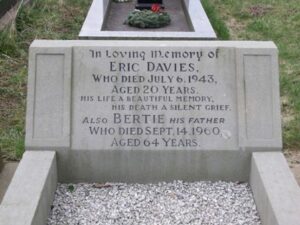
Gwyn Edwards, Lieutenant, Monmouthshire Regiment. Gwyn was born on 7 March 1909, the son of David Edwards, and of Asenath Mary Edwards (nee Grier), of Henllan-Amgoed, Whitland. He worked as a refrigeration engineer at Swansea prior to the war. Gwyn then left his job to enlist into the army and was commissioned into the 2nd Battalion, the Monmouthshire Regiment, which was a Territorial Battalion that had been mobilised at the outbreak of war. The Battalion were trained in Northern Ireland for the first two years of war, and returned to England in 1941, where it remained until June, 1944, when it was moved to France as part of the 53rd (Welsh) Division. The Battalion moved into battle positions near the River Odon, and prepared to launch an offensive against the enemy. Gwyn was killed in action here, on 30 June 1944. The 35-year-old was originally buried at Vigor-le-Grand, but in March 1945 his grave was exhumed and he was re-interred in Bayeux War Cemetery, France. Gwyn is commemorated in the Memorial Hall.
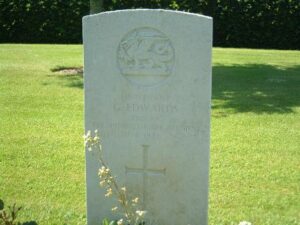
Emrys Evans, Pilot Officer, 119172, Royal Air Force Volunteer Reserve. Emrys was born in Whitland on 14 May 1917, the son of Gwilym Evans and Anne Evans (nee Thomas). The family resided at Johnstown, Carmarthen, prior to the war. Emrys had graduated from University with a B.Sc. from the Welsh Board of Education, before enlisting into the Royal Air Force Volunteer Reserve, and after completing his training as an Air Gunner was commissioned as Pilot Officer from Flight Sergeant on 21 March 1942, before being posted to 156 Squadron, Royal Air Force. The Squadron had formed at Alconbury in 1942 as a medium bomber squadron, flying the Vickers Wellington Mark III, and operated with No. 3 Group. On the night of 30 May 1942 a massive raid was launched by Bomber Command on Cologne, with some 1,047 aircraft taking to the sky. Emrys took off from Alconbury aboard a Vickers Wellington, Serial X3598, under the command of Pilot Officer Bain DFC. Of the aircraft that left England, 898 aircraft managed to drop their deadly cargoes on the city, causing terrible fires. Emrys and his crew had successfully dropped their bombs but on the return leg of the raid were intercepted and shot down over Holland by a German night-fighter, crashing into the Oosterschelde at 00.35 on the morning of 31 May 1942. Emrys and his five other crew-mates died in the resulting crash. The remains of the 25-year-old and his fellow crewmen were recovered from the wreckage and were buried besides each other in Bergen-op-Zoom German Military Cemetery. In April 1946 the Allied war graves within the cemetery were exhumed and re-interred in Bergen-Op-Zoom War Cemetery, Netherlands. Emrys is commemorated in the Memorial Hall.
John Emrys Evans, Pilot Officer, 61954, Royal Air Force Volunteer Reserve. John was born in 1920, the son of Dewi Evans and Laura Ellen Evans (nee Davies), of the Emporium, Whitland. He enlisted into the Royal Air Force Volunteer and after completing his training as a pilot was posted to 10 Squadron, Royal Air Force, which was a Bomber Command unit, based at RAF Leeming, in Yorkshire. On 8 August 1941 John took off from RAF Leeming aboard Armstrong Whitworth Whitley V, Serial Z6815, which joined a large bomber force sent to destroy targets in Kiel. The Whitley was shot down that night, possibly by a German night fighter, near the target area, and crashed, killing all its crew. John was 21 years old when he was killed during the crash. He has no known grave, so is commemorated on the Runnymede Memorial, Surrey, whilst all of his fellow crewmen are buried in Kiel War Cemetery, Germany. The photograph of John is courtesy of Eluned Morgan MS.
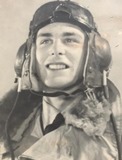
Ivor Evans, Fusilier, 3963528, Royal Scots Fusiliers. Ivor was born on 6 March 1917, the of Benjamin Evans and Elizabeth Jane Evans (nee Lewis), of 3, Park Street, Whitland. He married Lilian Ann Browning, a nurse, at Barry in 1941 and the couple briefly set up home at Cardiff where their two children were born. Ivor originally enlisted into the Welch Regiment, but was later transferred to the 6th Battalion, Royal Scots Fusiliers, which was attached to the 15th (Scottish) Division. The division landed in Normandy after D-Day, and took part in the fighting to break out from the beach head. Towards the end of July the 15th (Scottish) Division relieved the US 5th Division, then launched Operation Bluecoat, to aid a US breakout offensive. Ivor was killed during the securing of the high ground of Mont Pinçon, on 4 August 1944. The 27-year-old was originally buried at Montcharivel, but in February 1946 his grave was exhumed and he was re-interred buried in Bayeux War Cemetery, France.
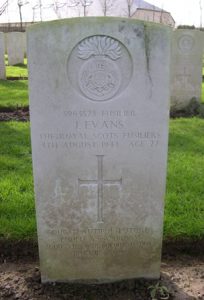
Gordon Wreford Griffiths, Leading Aircraftman, 1315678, Royal Air Force Volunteer Reserve. Gordon was born in 1921 the son of Alfred Griffiths and Winifred Ann Griffiths (nee Wreford). The family, from Pembrokeshire, had lived at Whitland for several years prior to the war, due to Alfred’s work as a wagon examiner for the Great Western Railway. Gordon enlisted into the Royal Air Force Volunteer Reserve and was posted to No 3 Service Flight Training School at South Cerney, in Gloucestershire for pilot training. On 26 October 1941, Gordon was carrying out a routine training flight, piloting an Airspeed Oxford I, Serial R6072, when it collided with Oxford N6267 of the same unit and crashed to the ground. Gordon was just 20 years old when he was killed that day. His body was recovered from the wreckage, and he was buried in Llanwnda Cemetery, Goodwick. Gordon is commemorated on both memorials.
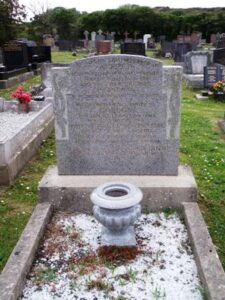
Reginald Allenby Douglas Griffiths, 6402909, Royal Sussex Regiment. Reginald was born on 19 December 1917, the son of Dan Griffiths and Margaret Griffiths (nee Roberts), of Lan, Whitland. He worked as a heavy labourer, laying pipework in Yorkshire prior to the war and was lodging at Wesley House, Holderness when war erupted. Reginald then enlisted into the army and was posted to the 4th Battalion, Royal Sussex Regiment. The Battalion was part of the B.E.F. in France at the outbreak of war, and was evacuated from Dunkirk in May 1940 after suffering heavy losses. In May 1942 the Battalion sailed to North Africa, as part of the 44th Division, and landed at Suez in July 1942, joining the 8th Army. The battalion then fought the Afrika Corps at Alan El Haifa, before joining the 10th Armoured Division. The Battle of El Alamein started on 23 October 1942, and on 27 October the Sussex were ordered to capture Woodcock. The battalion successfully advanced two miles into the German lines, but suffered heavy casualties. Reginald was posted as wounded and missing at sometime between 27 and 28 October 1942. The remains of the 24-year-old were later discovered and he was buried on the battlefield. In May 1943 his grave was exhumed and Reginald was re-interred in El Alamein War Cemetery, Egypt. Reginald is commemorated in the Memorial Hall, and is also on the Pendine Roll of Honour, and the Red Roses Memorial.
John Wynford Marsh Jones, Flight Sergeant, 1062633, Royal Air Force Volunteer Reserve. John was born on 2 January 1906, the son of Esther Jones, of 11 Park Street Whitland. He married Mary Auld Russell Young, the daughter of Robert Young, of the Gas Works, Whitland at Dursley on 10 February 1932. John enlisted into the Royal Air Force Volunteer Reserve and trained as a pilot, gaining his flying certificate at Lincolnshire Aero Club on 28 August 1939. He was then posted to 103 Squadron, Royal Air Force, which had been reformed in 1936 due to the growing German threat. The squadron was based in France at the outbreak of war, as part of the Advanced Air Strike Force, equipped with the obsolete Fairey Battle, but was withdrawn in June 1940 when the situation in France became critical. After spells at RAF Abingdon and Newton, the squadron took up permanent residence at R.A.F. Elsham Wolds in July 1941, as part of 1 Group, Bomber Command. By now it had been re-equipped with the Vickers Wellington, and was taking part in the 1,000 bomber raids on Nazi Germany. In July 1942 the squadron was re-equipped with the Handley Page Halifax, but they proved to be not up to the job, and after heavy losses the squadron converted to Avro Lancasters three months later. The squadron now took part on bombing missions over the industrial Ruhr Valley. On the night of 22 June 1943 John took off from RAF Elsham Wolds aboard an Avro Lancaster I, Serial ED773, as part of a 557 aircraft raid on Mulheim. The town was almost completely destroyed, but John’s Lancaster was shot down and crashed near the church of Téteghem, Nord, Hauts-de-France on the return journey the following morning, 23 June 1943, killing all her crew of eight men. The remains of John’s seven fellow crewmen were recovered from the wreckage and buried in Dunkirk Tow Cemetery, but the 37-year-old John has no known grave so is commemorated on the Runnymede Memorial, Surrey. John is commemorated on both Memorials at Whitland and is also commemorated on the Scunthorpe War Memorial.
William Francis Lanfear, Gunner, 3963334, Royal Artillery. William (Billy) was born in 1920, the son of Thomas Francis Lanfear and Elizabeth Anne Lanfear (nee Francis), of Whitland. He enlisted into the Royal Artillery and was posted to the 4th Maritime Anti-Aircraft Regiment, Royal Artillery. The Maritime Regiments were used as Anti Aircraft gunners aboard Merchant Vessels such as this, and served in some of the most dangerous theatres of war, such as the Arctic, Malta and Atlantic Convoys. Billy served aboard the SS Empire Wildebeeste, which was a 5,600 ton steamship. On 24 January, 1942 the ship was taking part in one of the Atlantic Convoys (Convoy ON-53), bound from Hull to the United States. The convoy was spotted just North West of Bermuda by the German Submarine U-106, Captained by Hermann Rasch, and he fired a spread of torpedoes at the Empire Wildebeest. She sank within minutes of the torpedo strike, and only 34 men survived the sinking. They were rescued by the American Destroyer USS Lang some days later. Billy was one of the men who died when the Empire Wildebeest sank. The 21-year-old has no known grave but the sea, so is commemorated on the Plymouth Naval Memorial, Devon. Billy is commemorated in the Memorial Hall.
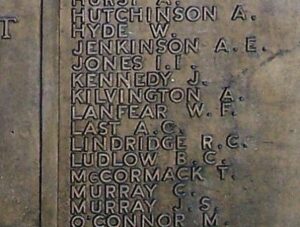
Dyfrig George Morgan, Able Seaman, D/SSX26145, Royal Navy. Dyfrig was born in Llandilofawr on 28 February 1921, the son of William and Mabel Morgan (nee George). His father worked for the Great Western Railway, and by 1936 the family had moved to Pontloerig, Whitland. Dyfrig enlisted into the Royal Navy as a young man and by the time war erupted was serving aboard the Tribal Class destroyer HMS Matabele, which had been completed on 25 January 1939. Matabele served in the 6th Destroyer Flotilla, and fought during the Battle of Norway in 1940 and on the Arctic Convoys in 1941 and 1942. She saw varied service, being an escort to various Commando landings, and was used for anti submarine duties, as well as convoy escort work. During January 1942 Matabele was nominated for escort work on Convoy PQ8 from Iceland to Murmansk. The convoy departed from Iceland on 11 January, then on 17 January 1942, just one day away from Murmansk, came under attack by the German submarine U-454. The U-Boat first sank the Russian trawler RT-68 Enisej, then later that afternoon the merchant ship Harmatis was hit by a single torpedo and taken in tow by the minesweeper HMS Speedwell. Matabele provided an escort as the rest of the convoy continued on ahead, but the U-Boat soon came into position and hit Matabele in the stern with a single torpedo. The explosion set of a massive explosion in the ships magazine which caused her to sink in less than two minutes. Sadly the majority of the survivors who jumped overboard into the freezing sea, were killed by ensuing explosions from the sinking ship, while more died as a result of the freezing sea temperature. Of some 238 men aboard Matabele, only two survived. Dyfrig was killed with the loss of Matabele that day. The 20-year-old has no known grave but the sea, so is commemorated on the Plymouth Naval Memorial, Devon. Dyfrig is commemorated in the Memorial Hall.
Parry Glyn Morgan, Signalman, 2334207, Royal Signal Corps. Parry was born on 20 November 1919, the son of Henry David and Lilian Edith Maud Morgan, of Compton House, Llanfallteg. He lodged at Aeron, Whitland prior to the war and worked for the Great Western Railway as a telegraphist and railway clerk. Upon enlisting into the army, Parry was posted to the Royal Corps of Signals, along with his brother Walter, and embarked for the Far East to join Malaya Command. When Parry arrived in Thailand, the British were in a state of readiness as Japanese aggression against China was at a high. At the beginning of December 1941 the Japanese launched simultaneous attacks on Pearl Harbour, Malaya, Thailand and Burma and heavy fighting ensued. Thailand itself was attacked on 8 December, the day after Pearl Harbour, and after several hours of fighting the Thai Government surrendered, allowing the Japanese safe passage through the country to Burma and Malaya. Parry was taken Prisoner by the Japanese in Thailand on 15 February 1942, and was marched, alongside thousands of other POW’s, to the POW base at Kanburi, where the men were distributed to other camps from which they would build the Burma Railway. Parry died of malnutrition and dysentery whilst working on the Burma Railway, on 9 June 1943. The 23-year-old was buried in the POW Camp at Tamakan, but in January 1946 his grave was exhumed and he was re-interred in Kanchanaburi War Cemetery, near Kanburi, in Thailand. His brother Walter had died in 1940. He is commemorated at Henllan Amgoed and in Whitland Memorial Hall.
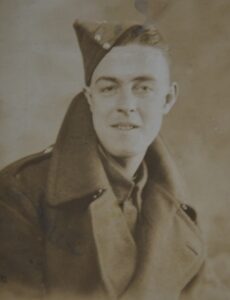
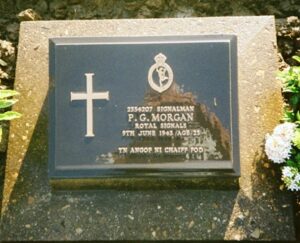
Walter Hugh Morgan, Signalman, 2362588, Royal Signal Corps. Walter was born on 5 August 1918, the son of Henry David and Lilian Edith Maude Morgan, of Compton House, Llanfallteg. He worked as a Wayleave Officer prior to the war and was lodging at Homecroft, Saundersfoot when war erupted. Walter then enlisted into the Royal Corps of Signals, alongside his brother Parry, and after training as a signaller was posted to the Trades Services Battalion. He contracted appendicitis whilst on active service in North Wales and died under anaesthetic at St. Asaph Military Hospital on 3 January 1940. The remains of the 22-year-old were conveyed home and he was buried with full military honours in Henllan-Amgoed Congregational Chapelyard. His brother Parry died in Burma in 1943. He is commemorated at Whitland Grammar School, Henllan Amgoed and in Whitland Memorial Hall.
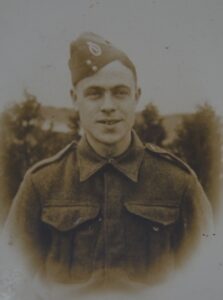
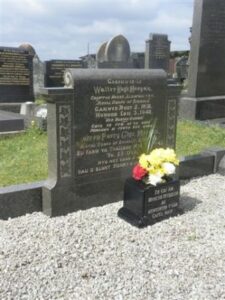
James Edward O’Brien, Sapper, 4208432, Royal Engineers. James, or Jimmy as he was known, was born in 1922, the son of Patrick O’Brien and Fanny O’Brien (nee Giles), of Delphin, Cyffig. He served in the 1024 Docks Operating Company, Royal Engineers. The men of the Company consisted of the various trades required to operate a dockyard, crane drivers, forklift drivers, engine drivers and so on. Jimmy was possibly an engine driver with the GWR, which led to his being called up into the Royal Engineers, and he served with them in North Africa, but was posted as missing, believed killed, in Tunisia on 4 August 1943. No trace of the 20-year-old was ever found, so he is commemorated on the Medjez-el-Bab Memorial, 60 km west of Tunis. Jimmy is commemorated in the Memorial Hall, and is also on the Pendine Roll of Honour and Red Roses Memorial.
Leslie George Islwyn Owen, Sergeant, 1288474, Royal Air Force Volunteer Reserve. Leslie was born on 26 May 1917, the son of Hugh Vaughan Owen and Rowena Lilian Owen (nee Lawrence), of Hazel Grove, Red Roses. After leaving school, Leslie became a Chemist’s Assistant and lodged at 14, Spring Gardens, Narberth. Leslie enlisted into the Royal Air Force Volunteer Reserve and after completing his training as an Observer was posted to 148 Squadron, Royal Air Force. The squadron had formed at Scampton as a long range medium bomber unit in 1937. By March 1939 the Squadron were armed with Vickers Wellingtons, and moved to R.A.F. Harwell, then moved to Malta in December 1940 from where it flew valuable bombing raids over North Africa. The squadron then moved again, to RAF Kabrit, in Egypt, to support the campaign in the Western Desert. On 8 July 1942 Leslie took off from Kabrit aboard a Vickers Wellington Ic, Serial T2985, under the command of Flying Officer Frank Tribe, as part of a bomber force despatched to strike targets in Tobruk Harbour. The Wellington was damaged during the raid and crashed some ten miles Southwest of Shallufa whilst attempting to return to Kabrit, killing all six of her crew. The graves of the crew were located in the desert in 1950 and all six men were buried in a collective grave in Fayid War Cemetery, Egypt. Leslie was 25 years old. He is not commemorated on either Whitland Memorial, but is on the Pendine Roll of Honour and the Red Roses Memorial.
David Parry Thomas, Fusiliers, 4197603, Royal Welch Fusiliers. David was born in 1917, the son of John and Esther Thomas, of Whitland. He enlisted into the army and was posted to the 1st Battalion, Royal Welch Fusiliers. The battalion was a Regular Army unit and was attached to the 6th Infantry Brigade, 2nd Infantry Division. It served in France in 1940, seeing heavy fighting during the withdrawal to Dunkirk, then spent two years in Britain rebuilding and re-equipping. On 15 April 1942 the 2nd Division sailed from England to reinforce the Eighth Army in the Western Desert, however with growing civil unrest in India, the convoy was diverted to the Far East, arriving in July 1942. In November the 6th Infantry Brigade was detached from the 2nd Division and joined the Arakan Campaign alongside Indian Army units. In June 1943 the brigade returned to the 2nd Division, which was still in India. In March 1944 Japanese forces invaded India and the 2nd Division was thrown into heavy fighting at Kohima, which had been besieged by the Japanese. The action became known as the Stalingrad of the East due to the ferocity of fighting on both sides, that helped to turn the tide of the campaign in the South East Asian theatre. At the end of the War in the East, the 2nd Division moved back to India on Garrison duties. Sadly David, who had survived the horrific fighting at Kohima, died as a result of an accident in Kirkee on 9 December 1945. The 25-year-old was buried in Kirkee War Cemetery, India. David is commemorated in the Memorial Hall.
Denzil Jonah Thomas, Leading Aircraftman, 651354, Royal Air Force Volunteer Reserve. Denzil was born at Cardigan on 10 August 1920, the son of Thomas Thomas and Hannah Thomas (nee James). The family had moved to Whitland by 1921, when Denzil’s sister was born. Denzil enlisted into the Royal Air Force Volunteer Reserve and was posted to the Middle East, to join 30 Squadron, Royal Air Force. The squadron had originally been formed in Ismailia in 1915, but prior to the outbreak of the Second World War was in Iraq. The squadron then moved to Egypt by 1938, flying the Bristol Blenheim and was ideally situated to play an active part in the fighting in North Africa when war erupted. The squadron initially flew bomber escort duties in North Africa, and moved to Greece when invasion was imminent, but when Greece fell to the Germans, the squadron was hurriedly evacuated to Crete, being stationed at Maleme Airfield. On 20 May 1941, the Germans attacked Crete, firstly by bombing the island, then by launching a paratrooper assault, with squadrons of Junkers 88 transport planes dropping scores of elite German Paratroopers near the airfield. Heavy fighting rapidly ensued as the Germans took possession of Maleme, in order to allow further reinforcements to land safely. Denzil was killed during the land battle for Maleme airfield on 20 May 1941. The 20-year-old has no known grave, so is commemorated on the Alamein Memorial, Egypt. Denzil is commemorated in the Memorial Hall, and is also on the Llanboidy Memorial.